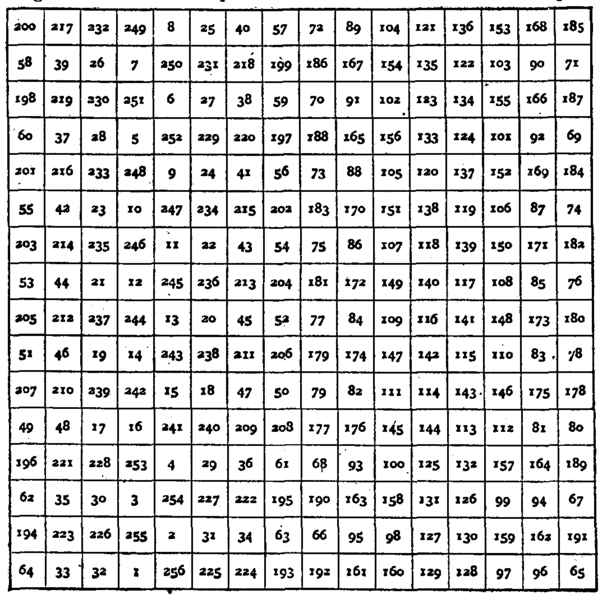The object of a magic square is to arrange numbers within the cells of the square such that the horizontal rows,
the vertical columns, and the two diagonals each add up to the same number called the magic number. In the magic square below,
the numbers 1 through 9 have been arranged such that the magic number 15 results.
| 8 | 3 | 4 |
| 1 | 5 | 9 |
| 6 | 7 | 2 |
The next magic square is called Dudeney's Prime Square. Henry Dudeney was a nineteenth century English author and mathematician who specialised in logic puzzles and mathematical games. His magic square below is a square of the third order using (mostly) prime numbers and having the magic number of 111. Note that 1 is not a prime number.
| 67 | 1 | 43 |
| 13 | 37 | 61 |
| 31 | 73 | 7 |
Magic squares have a rich history. The magic square is said to have been discovered in the third millenium B.C. by the Chinese Emperor Yu. According to tradition, the Emperor, while walking on the river bank, found a turtle with an odd diagram on its shell (see below left). The Emperor saw in the unusual pattern a numerical sequence. He called this pattern the "Lo Shu." His discovery was a magic square of the third order, and it is symbolically the same as the first magic square in this article (below right):
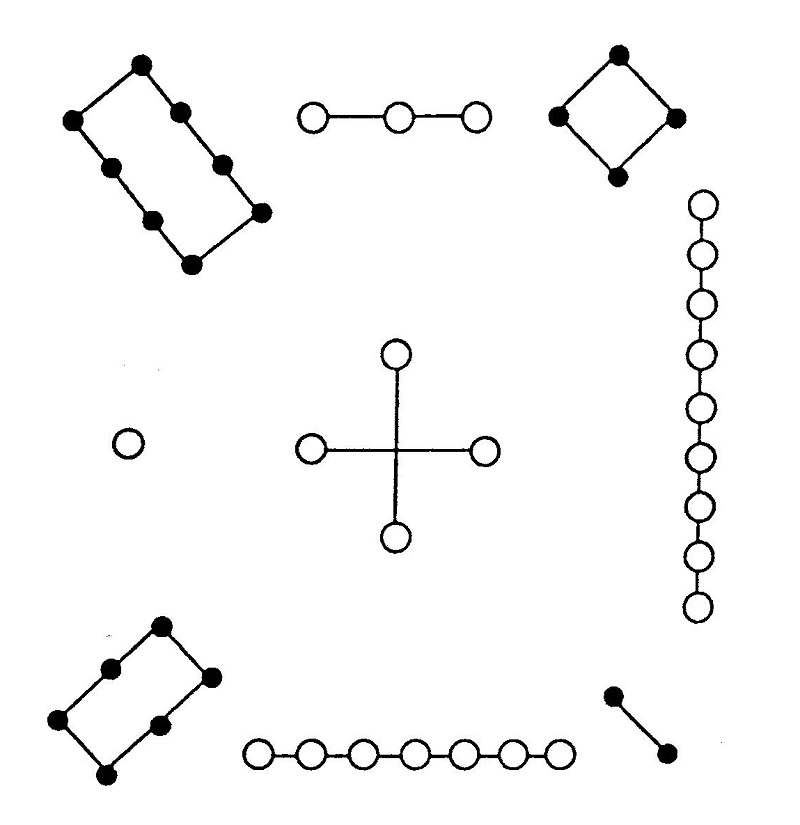
|
|
In The Scholar's Arithmetic (Adams, 1801), one of the earliest mathematics schoolbooks used in the United States, the following problem is offered to readers:
Suppose the 9 digits be placed in a quadrangular form;This query is found in a section titled, "Pleasing and Diverting Questions," and, indeed, this question and the concept behind it have intrigued people for thousands of years. A twelfth-century European version, known in the monasteries of northern Germany, is more picturesque:
I demand in what order must they stand, that any three
digits in a a right [straight] line may make just 15?
There were three brothers [monks] at Cologne,
who had nine casks of wine. The first cask
contained 1 bucket, the second 2, the third 3, the
fourth 4, the fifth 5, the sixth 6, the seventh 7,
the eighth 8, the ninth 9. Divide the wine
equally among these three without breaking any casks.
The answer given is that each monk will obtain fifteen measures, or buckets, of wine. This problem traces its origin to the Lo Shu. The Lo Shu is the first known magic square, and has served as a cosmic map uniting people with heaven, a talisman for good fortune, a key to medieval alchemists' attempts at transmuting lead into gold, an aid to childbirth, an astrological means of communicating with the planet Saturn, and so on.
Other magic squares can easily be derived from the Lo Shu:
- Through a series of rotations and reflections about its major axes, seven other third-order magic squares can be derived from the Lo Shu. Find them.
- If all the terms of the Lo Shu are multiplied by a constant or if the same number is either added to, or subtracted from, each term, a new third-order magic square results.
- When two third-order magic squares are added term by term, a new magic square is formed.
- If the Lo Shu is considered a matrix and is muliplied by itself three times, a new magic square is formed.
In 1514, the Dutch artist, Albrecht DŁrer, incorporated a magic square of the fourth order into his etching, "Melencolia." Within this magic square was the date of the Durer etching: 1514. Durer's etching is shown below with a blow up of the magic square beneath it.
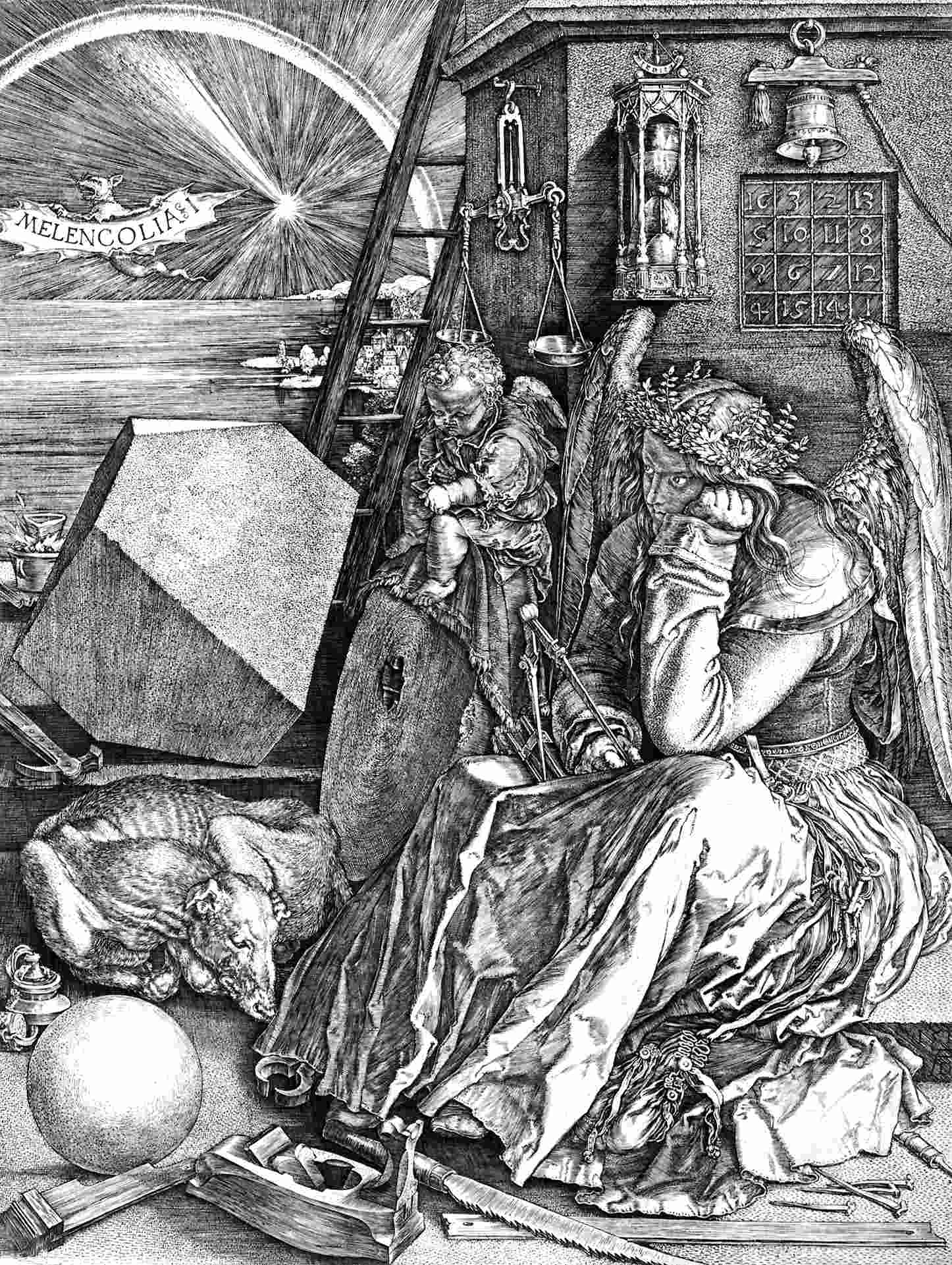
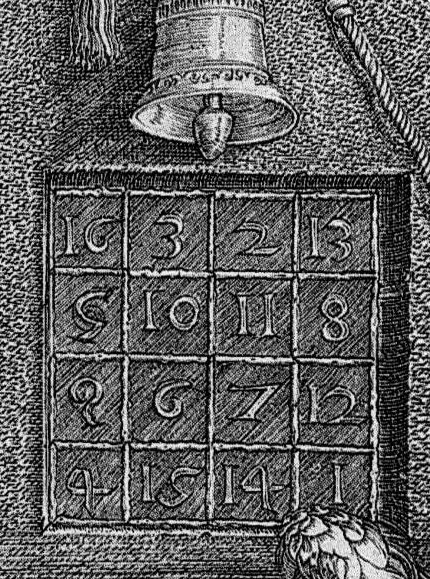
A famous magic square using palindromes was found on an ancient Roman ruin in Cirencester, England (see figure below). The palindrome is in Latin and is SATOR, AREPO, TENET, OPERA, ROTAS. Loosely translated, it is "Arepo, the mechanic, guides the work of the wheels."
| S | A | T | O | R |
| A | R | E | P | O |
| T | E | N | E | T |
| O | P | E | R | A |
| R | O | T | A | S |
Benjamin Franklin, a Founding Father of the United States, is known to have excelled in multiple studies. But one of Franklinís lesser celebrated accomplishments was his amusement in creating magic squares, Most of Franklinís squares, however, presented the unique feature of bent diagonals giving the magic sum, instead of straight. He called his 16◊16 magic square (shown below) the "most magically magical of any magic square ever made by a magician."
One of Ben Franklin's 8 x 8 magic squares:
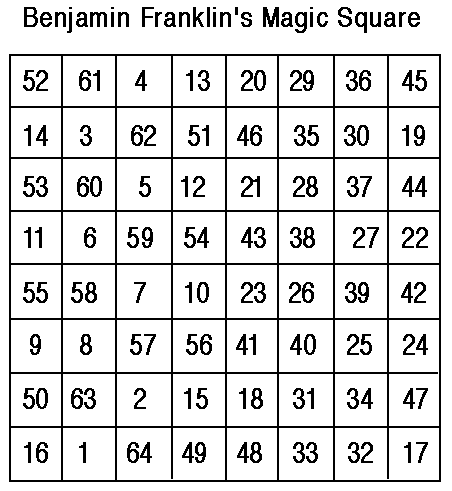
Ben Franklin's 16 x 16 magic square:
